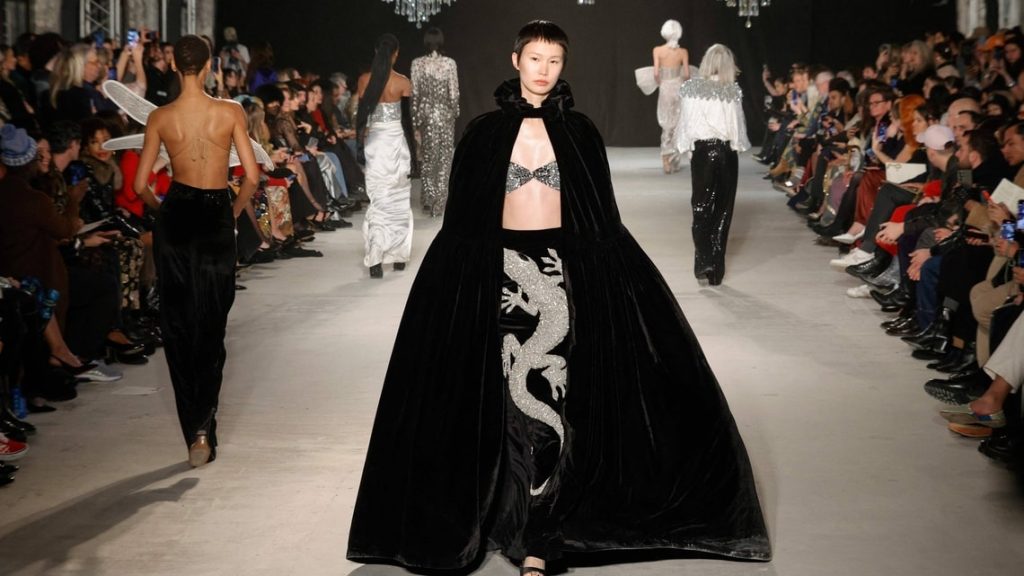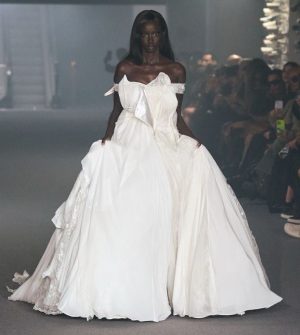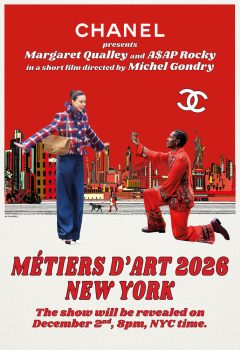The fashion capitals of Milan, Paris, London, and New York, or ‘The Big Four’’, are the cornerstones of the global fashion industry. Everything and anything in fashion starts in these big cities.

Image: New York Fashion Week
According to IFDAQ Global Cities Consumer IPX, Paris, New York, London and Milan will maintain their dominance until at least 2030. Per Vogue Business, ‘Gilbert says that in the early 2000s it was commonly anticipated that the future fashion order would shift towards cities such as Shanghai, Mumbai or São Paulo. Instead, the traditional order has reasserted itself over the past twenty years.
“Those fashion capitals are locked in symbolically in a way that almost becomes self-fulfilling,” he says. “As long as the global elite looks at those places as markets with elite status, that stays in place.”’
Paris is expected to overtake New York to become the number one city for relevance and potential in the global fashion industry by 2025, per IFDAQ Global Cities Consumer IPX. The likelihood is that London will rise to third place, surpassing Milan, the research says.
What is a Fashion Capital?
A fashion capital is a city that holds a prominent role in the global fashion industry, serving as a hub for creativity, innovation, and commerce. These cities are known for their influence on fashion trends, high-profile fashion events, and the concentration of top designers, luxury brands, and fashion schools.
Historically, Paris, Milan, New York, and London have been recognised as the “Big Four” fashion capitals due to their long-standing contributions to the industry. Each of these cities has a distinct fashion identity—Paris for its timeless elegance, Milan for its craftsmanship, New York for its bold commercial designs, and London for its edgy, innovative approach. These cities host acclaimed fashion weeks that set the tone for upcoming seasons, making them critical players in the dissemination of global fashion trends. Emerging fashion capitals like Tokyo, Seoul, and São Paulo are also gaining recognition for their unique combination of traditional and contemporary influences.
The significance of a fashion capital extends beyond its economic impact on the industry. It also reflects the cultural values, history, and aspirations of its region. A fashion capital acts as a mirror, reflecting societal shifts and technological advancements through its evolving trends. The reputation of such cities as fashion epicenters is reinforced by their ability to nurture talent, create iconic fashion moments, and maintain a dynamic connection to global audiences.
The Historic Four Fashion Capitals of the World
Milan
History of Milan as a Fashion Capital
Italy holds a significant place in fashion history. During the Renaissance, Florence, Rome, and Milan were artistic centers that influenced European fashion and emerged as a hub for luxury and craftsmanship.
Milan’s importance in the fashion industry commenced in the late Middle Ages and early Renaissance. Having flourished as a center of trade due to its geographical position, its takeover by the House of Sforza in 1450 established Milan as a prosperous city, known in particular for its silk processing. This quickly evolved into a production of high-quality materials, such as lace, jewellery and hats.
For the next few centuries, however, Milan’s reputation for sumptuous fabrics remained overshadowed by Florence’s artisanal fashion–thriving due to the Renaissance and wealthy patrons. Milan was the place to go for raw textiles but “fashion” was found in the avant-garde designs by Florentine tailors and seamstresses.
The tide began to turn in the nineteenth century, when Milan’s industrial identity began to lend the city its distinct style. The appreciation of textiles meant that the focus remained on finely executed tailoring. The city’s interest in fashion grew, and in 1865, the Bocconi brothers opened a ready-to-wear shop on Milan’s Via Radegonda. This was followed by their opening the country’s first department store in Milan, Alle Città d’Italia, renamed in 1921 to La Rinascente. The store sold luxury products without the usual high prices, opening up fashion to customers of lower income.
By the turn of the century, the Milanese had become decidedly “fashion conscious”, able to invest in luxury tailoring that was more affordable than its Florentine and Roman counterparts. By the 1950s, the major Italian cities had each established its own fashion identity: Rome was known for its haute couture, Florence for its handmade clothing. Milan, thanks to the influence of the Bocconi brothers and in a nod to its industrial background, was now renowned for its “ready-to-wear”, which remained a novelty in an age when clothes typically continued to be tailor made.
Despite Milan having a sartorial angle, however, Florence still reigned as fashion capital of Italy. Since 1951, it had been home to fashion shows held at the Palazzo Pitti, showcasing designs by the likes of Emilio Pucci and the Fontana sisters. The shows were a hit, but the city’s success became its own downfall. Florence’s infrastructure was unable to deal with the fashion set visiting from across the world and it was decided that the shows would be moved to Milan. Milan Fashion Week was born, making its debut in 1958.
The city’s industrial past worked to its advantage, with its wealth of printing and publishing houses. Milan had the means to promote Italian fashion brands to the masses, and became a major force of Italy’s fashion media, with Vogue Italia establishing its headquarters there in 1961. As the influence of the magazines grew, fashion designers, photographers, models, and writers flocked to Milan.
In the 1970s, the popularity of prêt-à-porter skyrocketed. Milan offered designs that were more affordable than the haute couture shown in Paris, and its functional, simple style was making waves in Europe. Milan-based fashion designers Gianni Versace and Giorgio Armani stormed their way onto the fashion scene. Versace’s revealing cuts, eye-catching prints and colors were distinct from Armani’s minimalist style. Today, the city is home to over 12,000 fashion companies and maisons, and houses the headquarters of most major Italian labels.
Milan Fashion Week

Prada at Milan Fashion Week
Milan Fashion Week. established in 1958 and partially organised by non-profit association Camera Nazionale della Moda Italiana, has a packed schedule of runway shows, including a number of powerhouse luxury fashion brands, keeping the fashion editors and connoisseurs riveted. An apparel trade show is held semi-annually in Milan, Italy the autumn-winter fashion shows are held in February-March each year and spring-summer fashion shows in September-October.
For many centuries fashion in Italy existed on a regional scale with a legacy stretching back to the Middle Ages of different cities specialising in their own crafts, fabrics and luxury goods. Per Glam Observer: “Before Milan became Italy’s fashion capital the country’s fashion scene emerged at the Palazzo Pitti in Florence with the runway organised in 1951 by the Italian aristocrat Giovanni Battista Giorgini who held fashion shows at his own residence with designs from Emilio Pucci and Fontana sisters, and then at Sala Bianco in Palazzo Pitti. For the first time, Italy received buyers from major American retailers such as Saks Fifth Avenue and Bergdorf Goodman.
In 1958, the non-profit Camera Nazionale della Moda Italia came into being with a vision of promoting and protecting design talent. And Milan Fashion Week made its debut. Per Vogue: “Over the intervening decades more and more Italian brands came to the fore, with an emphasis on slightly more affordable luxury than their Parisian counterparts- as well as a knack for inventive textiles production- as exemplified by Etro and Missoni. As different cities continued to vie for the attention of the press and buyers.. Milan’s status slowly grew.”
During the Seventies and Eighties Milan-based fashion designers including Giorgio Armani and Gianni Versace became hugely popular, going a long way towards cementing the region’s status as a fashion capital. Towards the end of the twentieth century iconic fashion designers including Moschino and Dolce and Gabbana, Miuccia Prada, Versace and Gucci ruled the fashion landscape.
Currently Milan Fashion Week has relocated to three main venues in the city of Milan: Spazio Cavallerizze- which is part of the Leonardo da Vinci National Science and Technology Museum, Palazzo Reale’s Sala delle Cariatidi and Padiglione Visconti. Other show locations can be found throughout the city. Per Vogue: “In Milan, the topic of succession persists. Many of the biggest houses have been family-owned, but luxury’s globalisation and a rethink of creative disciplines has led several companies to sell ownership stakes to conglomerates or become publicly listed to survive.”
Paris
History of Paris as a Fashion Capital

Rahul Mishra at Paris Haute Couture Week
Paris is famous as the epicentre of fashion: a city which celebrates the finest ateliers worldwide. As fashion historian Valerie Steele observes in her book ‘Paris: Capital of Fashion’: “The history of Paris fashion blurs inextricably into myth and legend.”
Paris has been the epicenter of fashion since the seventeenth century, when the French court popularised opulent attire. In the nineteenth century, Charles Frederick Worth established the first modern fashion house in Paris, creating haute couture as we know it today. Half a century later, Paris emerged as the epicenter of style under the royal court of Louis XIV. Paris’ dominance continued into the twentieth century with iconic fashion designers like Coco Chanel and Yves Saint Laurent solidifying its status as the capital of haute couture.
Since, Paris is celebrated as one of the undisputed fashion capitals of the world, a title it has earned through centuries of innovation, artistry, and influence in global fashion. Home to iconic fashion houses such as Chanel, Louis Vuitton, Dior, and Yves Saint Laurent, the city has shaped the essence of haute couture and luxury fashion.
From the establishment of the first modern fashion house by Charles Frederick Worth in the 19th century to the present-day runways of Paris Fashion Week, Paris has continually set the benchmark for elegance, craftsmanship, and creativity. Its ability to seamlessly combine tradition with modernity ensures that it remains at the forefront of the evolving fashion industry.
One of the reasons Paris holds its preeminent position is its cultural heritage and dedication to the arts, which permeates every aspect of the city’s identity. The streets of Paris are a living canvas of inspiration, where historical architecture meets avant-garde design. The city’s fashion schools, such as the Institut Français de la Mode, nurture a new generation of designers. Moreover, Paris Fashion Week, one of the most anticipated events on the fashion calendar, attracts fashion designers, buyers, and media from around the globe, solidifying Paris as the epicenter of style and trendsetting.
Paris’s influence extends beyond its runways and boutiques, impacting global fashion trends and inspiring fashion designers worldwide. The city’s ethos of luxury and sophistication influences high-end brands and mainstream fashion. Through collaborations, exhibits, and global campaigns, Paris maintains its reputation as a hub of creativity and a symbol of aspirational elegance. Its legacy as a fashion capital is not merely a matter of historical significance but a testament to its dynamic ability to adapt and lead in an ever-changing global fashion landscape.
Per Vogue Business: ‘A further boost for Paris, defining it as the world centre of luxury, is the ever-increasing dominance of Paris-based conglomerates LVMH and Kering. Godart makes the comparison with Silicon Valley’s dominance of technology. “It’s a classical capitalist concentration dynamic, a clustering effect.” The French capital’s central role seems assured. “Paris has the allure, the glamour and is the home base for two huge influential fashion groups that anchors it,” says Julie Gilhart, industry veteran and chief development officer of Tomorrow Consulting. “In my fashion history I’ve seen Milan, London and New York going up and down. The only thing that remains pretty solid is Paris.”’
Paris Fashion Week
In the nascent days of Parisian fashion, designer Paul Poiret came up with the concept of a series of lavish balls where guests were invited to dress in their finest. One of the most notable was ‘The Thousand and Second Night’ held in 1911, where Poiret presented lampshade dresses and harem pants. Throughout the Twenties and Thirties, Paris became a hotbed of the most famous names in Fashion from Coco Chanel to Elsa Schiaparelli and Madeleine Vionnet.
Fashion became a serious affair as each designer presented their collections on models, at client-only no-paparazzi soirees. Post World War II, Paris fashion shows become more regulated. In 1945, Chambre Syndicale de la Haute Couture laid down regulations that all couture houses had to present at least thirty-five looks each season. Paris was feeling nervous about the rising influence of New York fashion industry but in 1947, Dior’s first collection, Corolle, dispelled any apprehension with exaggerated silhouettes that became a rage worldwide. In the Sixties, another label to contend with, emerged: Yves Saint Laurent.
Per Vogue, “The first official Paris Fashion Week happened in 1973 with the formation of the Fédération Française de la Couture, and opened with the game-changing Battle of Versailles Fashion Show. This fight — of the sartorial variety only — saw the historic tensions between Paris and New York fashion brought to life on stage as five of the biggest French designers were pitted against five unknown Americans.”
The fundraiser to restore the Palace of Versailles featured Yves Saint Laurent designer, Emanuel Ungaro, Christian Dior, Pierre Cardin and Hubert de Givenchy representing France and Anne Klein, Halston, Oscar de la Renta, Bill Blass and Stephen Burrows representing America. From then on, the shows became bolder and more theatrical, from Thierry Mugler‘s 1984 extravaganza to Jean Paul Gaultier’s conical bra which became famous when worn by Madonna. Chanel’s revival helmed by Karl Lagerfeld in the Eighties yielded memorable runway moments, while a new wave of Japanese designers like Comme Des Garçons led to revolutionary style. Today, Parisian shows are more dramatic with backdrops replicating train stations, airports and merry-go-rounds.
London
History of London as a Fashion Capital
London’s fashion legacy dates back to its history as a center of trade and textiles. The city became a fashion capital during the Sixties “Swinging London” era, epitomised by bold, youthful designs from figures like Mary Quant. London’s punk movement in the Seventies and the emergence of fashion designers like Vivienne Westwood further cemented its reputation for pushing boundaries.
Today, London stands as one of the four major world fashion capitals, alongside Paris, Milan, and New York, because of its rich history, innovative design scene, and cultural diversity. The city is steeped in a tradition of tailoring and craftsmanship, dating back to the bespoke suits of Savile Row and the luxury heritage brands like Burberry. However, London’s distinction lies in its balance of historic roots and cutting-edge creativity. This duality is reflected in its fashion week, which showcases fashion designers such as Alexander McQueen and Vivienne Westwood alongside emerging talent.
A key factor in London’s fashion dominance is its cultural diversity. The city is a melting pot of global influences, where fashion designers and brands draw inspiration from myriad cultures, styles, and traditions. This cultural fusion has given rise to dynamic collections. Additionally, London’s streetwear, influenced by subcultures like punk, mod, and grime, has helped redefine casual youth-centric fashion. From couture to urban style, the city offers an inclusive perspective that appeals to fashion enthusiasts across the globe.
Another critical aspect of London’s status as a fashion capital is its world-class education and institutions. Schools like Central Saint Martins and London College of Fashion have produced influential designers like Stella McCartney and John Galliano. These institutions serve as incubators for groundbreaking ideas, ensuring a continuous flow of talent and innovation. Furthermore, London Fashion Week, one of the “Big Four” fashion events, is a platform that propels designers onto the international stage.
London Fashion Week
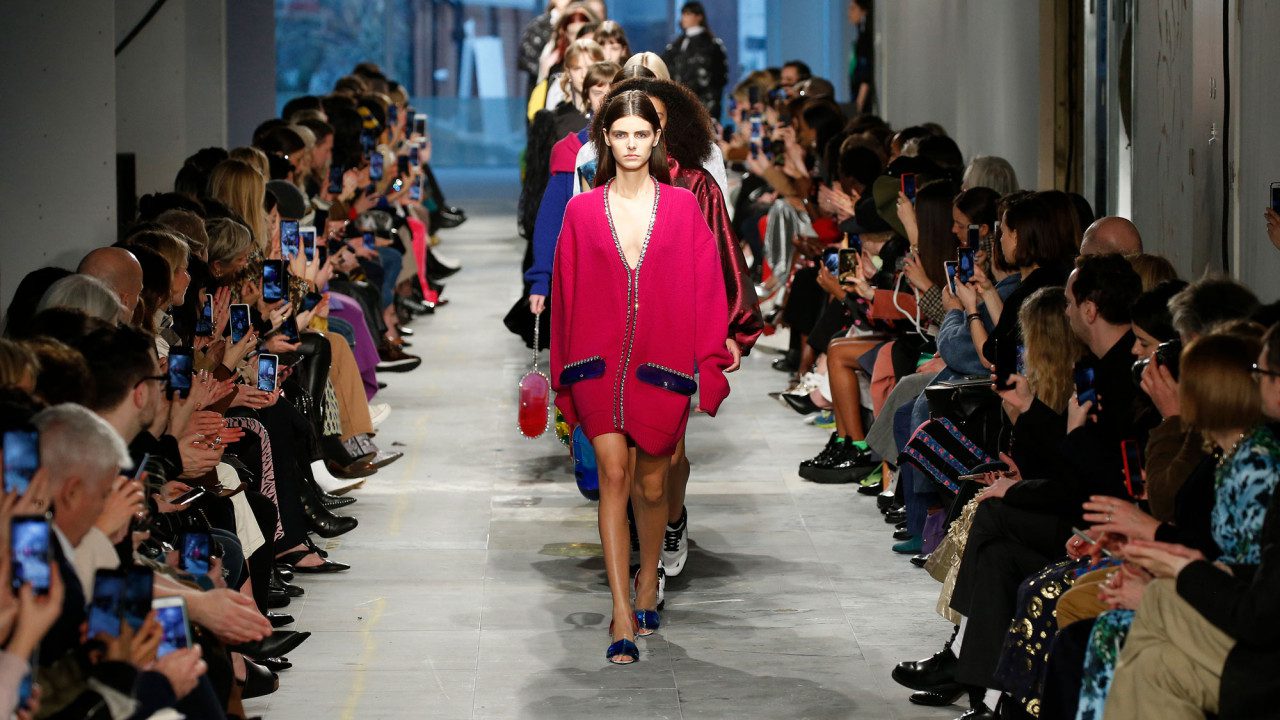
London Fashion Week
London Fashion Week is one of the highest profile events in the UK and one of the ‘big four’ global catwalk influencers. Organised by the British Fashion Council and funded by a number of sponsors, it puts British Fashion on the international stage. In addition, the event itself reportedly contributes £20 million to the London economy. There are fifty-odd catwalk shows as well as 45+ show off schedule. The exhibit that runs alongside the catwalk showcases nearly two hundred designers each season.
The history of London Fashion Week is rich and exciting. In the ‘80s designers showed alongside mid-market collections in small exhibits. Sponsored fashion shows began to showcase young, emerging fashion designers such as John Galliano and Bodymap. In 1983 the British Fashion Council was formed to organise and coordinate the promotion of fashion weeks in the UK.
In March 1984 the British Designer Show joined forces with the London Designer Collections to bring fragmented exhibits together under one roof at Olympia. For the first time iLondon Fashion Week had a cohesive industry focus with the exhibit, catwalk shows, awards and social activities all being coordinated, i.e. London Fashion Week as we now know it.
Throughout the remainder of the Eighties the British Fashion Council continued to schedule and organise fashion shows alongside the British Designer Show at Olympia. In 1993 the British Fashion Council undertook the organisation of both the exhibit and shows at London Fashion Week with the aim to focus on international attendance and to find sponsorship to assist emerging design talents to showcase and grow their businesses in London.
Despite global recession throughout the late 80s and early 90s, London Fashion Week saw the emergence of some of the UK’s most exciting fashion careers that London had at that stage seen, such as Bodymap and John Galliano. It was in 1993 that the British Fashion Council launched New Generation to support emerging talent. The new talent to first receive this support included Alexander McQueen and Clements Ribeiro. New Gen is now internationally recognised as a leading emerging talent identification and support scheme.
This heightened profile of London and its fashion designers led global brands such as Givenchy, Dior, Gucci, and Pucci to source their heads of design and creative directors from this talent pool. In 1997, after just two collections post-graduation, Stella McCartney was appointed chief designer at Chloe. A more recent crop of exciting design stars emerging from New Gen led the British Fashion Council to extend their designer support schemes to the benefit of London Fashion Week. New Gen, offers business support through business seminars alongside financial support to designers to showcase.
Fashion Forward was introduced in September 2006 to offer the second phase funding to those designers who grew beyond New Gen and were identified as designers with talent and potential for growth. This scheme has supported Giles Deacon, Jonathan Saunders, Richard Nicoll, Sinha Stanic, Jens Laugesen, Roksanda Illincic and today supports Erdem, Christopher Kane and Marios Schwab.
The British Fashion Council’s support for young and talented designers continues to grow. In 2008, for the first time it took a small part of London Fashion Week to Paris when it hosted an emerging talent showroom. Through this initiative these businesses were able to take orders and meet media who were unable to see their collections in London.
London Fashion Week currently ranks alongside New York, Paris, and Milan as one of the ‘Big Four’ fashion weeks. It presents itself to funders as a trade event that also attracts significant press attention and benefits taxpayers. A retail-focused event, London Fashion Week Festival, takes place immediately afterward at the same venue and is open to the general public.
PS In 2009, Burberry returned from showing in Milan to showing in London and the show was live-streamed. This began an era of “see now, buy now” shows. In spring 2010, London Fashion Week became the first of the “Big Four” fashion weeks to offer designers showing collections on the catwalk at Somerset House the opportunity to broadcast their shows live on the Internet.
New York
History of New York as a Fashion Capital
New York became a fashion capital during World War II when Paris was temporarily cut off from global fashion. American designers began to flourish, focusing on practical, stylish ready-to-wear collections. The rise of Seventh Avenue as the “Garment District” in the twentieth century reinforced New York’s status.
Renowned for its fast-paced environment and cosmopolitan vibe, New York is the epicenter of American fashion. It is home to iconic fashion brands like Ralph Lauren, Calvin Klein, and Donna Karan, whose designs have shaped global trends. The city’s fashion identity is rooted in practicality and modernity, reflecting the fast-moving, urban lifestyle of its inhabitants.
What sets New York apart is its ability to merge fashion with business on an unprecedented scale. The city is a hub for retail and commerce, boasting flagships for luxury brands, boutiques, and a thriving e-commerce sector. Fifth Avenue, one of the world’s most famous shopping streets, epitomises New York’s commercial fashion appeal. Additionally, the city’s fashion industry employs tens of thousands, spanning fashion designers, models, and manufacturers. This integration of artistry and business solidifies New York as a vital player in the global fashion economy.
Another defining feature of New York’s fashion prominence is its celebration of diversity and individuality. The city’s cultural melting pot fosters creativity and inclusivity, allowing fashion designers to draw inspiration from myriad traditions, subcultures, and personal stories. This is evident in the diversity of its runway shows and street-style. Moreover, institutions like the Fashion Institute of Technology and Parsons School of Design have nurtured groundbreaking talent such as Marc Jacobs and Tom Ford.
New York’s synergy of commerce, creativity, and inclusiveness ensures its lasting influence on the global fashion landscape. Per McKinsey, ‘Within the United States, New York City has one of the country’s highest concentrations of fashion sales, talent, and employment. Activities related to fashion—which we define as fashion retail, wholesale and distribution, along with textile, apparel, footwear and jewelry manufacturing—contributed more than $50 billion in direct sales, $45 billion in indirect sales, and more than 130,000 jobs in 2022.’
New York Fashion Week

Ralph Lauren at New York Fashion Week
The bi-annual New York Fashion Week, created in 1993 by the Council of Fashion Designers of America, always has a high-wattage runway schedule with fashion collections shown to the buyers, the fashion media and guests. Today, the economic impact of New York Fashion Week is estimated at $887 million.
Per Vogue: “Before the advent of the Second World War, Paris had been the epicentre of fashion: where buyers and press alike flocked, keen to know what the couturiers were producing next. The French capital powerfully dictated trends, with plenty of US-based fashion labels copying what first appeared across the Atlantic. However, as war continued across the globe and Paris remained under German occupation, an opportunity emerged for the Americans to establish their own design credentials.”
The precursor to New York Fashion Week was “Press Week,” which began in the Forties. It was organised by fashion publicist Eleanor Lambert as the means of showcasing American fashion and diverting attention from French fashion during World War II. Local fashion talent was taken seriously, with American designers including Claire McCardell, Hattie Carnegie and Norman Norell acknowledged in magazines like Vogue. By the mid Fifties the event was referred to as “Press Week of New York”.
Per Vogue: “Lambert was still involved, helping to set up the Council of Fashion Designers of America in 1962, to ensure recognition of the US fashion industry both culturally and economically. And the shows just kept getting bigger and better. From Lambert’s protégé Halston’s events… to Diane von Furstenberg showcasing her now ubiquitous wrap dresses, the 1970s saw plenty of glitz and innovation.”
Over the decades, the shows established America as a fashion force, debuting Oscar de la Renta and Ralph Lauren. By the Nineties fashion journalists and buyers were exhausted due to shows taking place in different venues. In 1993, the Council of Fashion Designers of America – led by president Stan Herman and executive director Fern Mallis- took over the organisation of NYFW and consolidated the citywide events by staging them in Bryant Park. This brought structure and professionalism to the event which was branded with the trademark “7th on Sixth”.
NYFW expanded its reach throughout the late twentieth century and attracted top fashion designers, runway models, and fashion editors. In 2001, “7th on Sixth” was sold to IMG. The exhibit was canceled in September 2001 in light of the 9-11 terrorist attacks. In 2007 Mercedes-Benz became title sponsor and in 2010, IMG- Mercedes-Benz Fashion Week New York left Bryant Park, relocating to the Lincoln Center for the Performing Arts. And, from September 2011, New York designers began live-streaming shows.
In 2013, IMG and its New York Fashion Week events were sold to William Morris Endeavour and Silver Lake Partners for an estimated $2.3 billion. In January 2015, Mercedes-Benz announced its departure as title sponsor. Producer Kanye West announced he would take over sponsorship. In March 2015, WME- IMG announced that it had acquired MADE Fashion Week, which takes place during WME-IMG’s events. In 2015, IMG’s events were moved from Lincoln Center to Spring Studios. The years that followed were a time of great advance, with designers including Rodarte, Thakoon, Jason Wu, Prabal Gurung and Alexander Wang.
These days it is held in Tribeca’s Spring Studios but increasingly fashion designers are returning to off-site presentations. Notwithstanding NYFC is a dominant fashion and cultural force. With the rise of the internet and social media, it has also become more accessible to the public. Per W: “NYFW increasingly emphasized diversity and inclusivity, with designers showcasing a wider range of body types and ethnicities on the runway.”
Throughout its tenure- and moving forward- NYFW plays a crucial role in shaping the American fashion industry, providing a platform for both established and emerging fashion designers to showcase their collections to a global audience. As Sex and the City’s Carrie Bradshaw stated, “Every year the women of New York leave the past behind and look forward to the future. This is known as Fashion Week.”
Emerging fashion capitals

Lagos Fashion Week
The four fashion capitals—Milan, Paris, London, and New York—each bring unique qualities to the global fashion industry. Their rich histories, innovative designers, and globally influential fashion weeks ensure their continued dominance as leaders in the world of style. However, other cities are emerging as fashion capitals too. Per Who What Wear, ‘Tbilisi, Georgia; Lagos, Nigeria; Mexico City, Mexico; Johannesburg, South Africa; and Shanghai, China are home to some of the most exciting new design talents on the scene right now.’
The Spring Summer 2025 media preview of Shenzhen Fashion Week and the New Fashion Capital Index Report by Vogue Business in China held on October 16 in Shenzhen, was where Vogue Business China unveiled the top cities on the 2024 New Fashion Capital Index. Shenzhen, known as the “City of Innovation” and the “City of Fashion,” emerged victorious, becoming the new compass for urban fashion.
The index evaluated the strengths of Shenzhen with regard to Fashion Consumption Power, Fashion Business Potential, Fashion Cultural Charm, Fashion Innovative Talent, and Fashion Development Capacity. Shenzhen has emphasised developing the fashion industry in recent years, actively building a fashion industry base with the highest concentration of domestic original brands, the most comprehensive industrial supporting facilities, and a significant scale and cluster effect.
Lagos has experienced a meteoric rise to global acclaim. The Nigerian capital established Lagos Fashion And Design Week in 2011, which paved the way for ready-to-wear lines and a move away from bespoke pieces. Since, the world is taking more notice of Nigerian designers, with both local and international buyers and retailers attending the fashion week to discover new brands.
Eastern European city Georgia has a diverse culture and design aesthetic as the country borders Europe and Asia. Materiel CEO and founder Maia Gogiberidze, Tbilisi tells Who What Wear. “As we keep evolving the local scene, we will see the emergence of more prominent industry figures whose voices will be critical in paving the road for the next chapter of the fashion narrative”.
Mexico City is a cultural hub where the local fashion is increasingly capturing the attention of worldwide buyers and editors. The city has undergone a cultural awakening and is revitalising the local art and fashion. From a design perspective, Mexico City has a wealth of fashion designers like Victor Barragán, Aude Jan and Charles Gout, and Sofía Elias who showcase distinct craftsmanship.
Johannesburg in South Africa is diverse and vibrant, and the emphasis on sustainability has defined how the country has established itself in the fashion industry. “Very few individuals have access to international luxury, designer clothes—often not even local designer clothes—and are therefore forced to be very creative with secondhand finds and styling,” Viviers Creative Director Lezanne Viviers tels Who What Wear.
Read More:
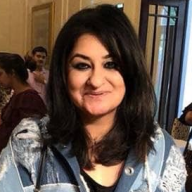
Jasmeen Dugal is Associate Editor at FashionABC, contributing her insights on fashion, technology, and sustainability. She brings with herself more than two decades of editorial experience, working for national newspapers and luxury magazines in India.
Jasmeen Dugal has worked with exchange4media as a senior writer contributing articles on the country’s advertising and marketing movements, and then with Condenast India as Net Editor where she helmed Vogue India’s official website in terms of design, layout and daily content. Besides this, she is also an entrepreneur running her own luxury portal, Explosivefashion, which highlights the latest in luxury fashion and hospitality.


